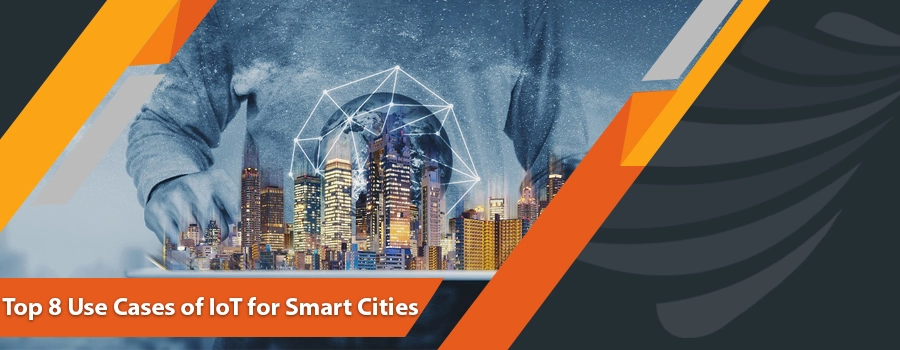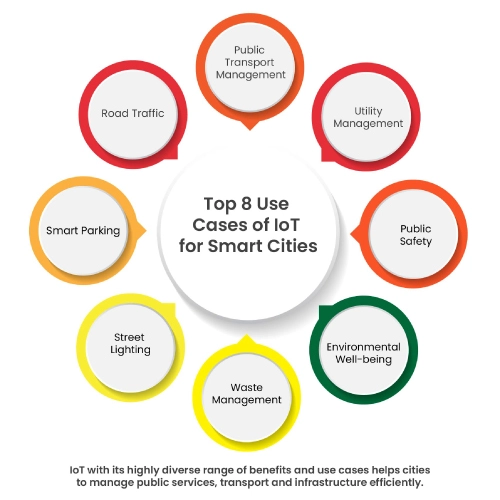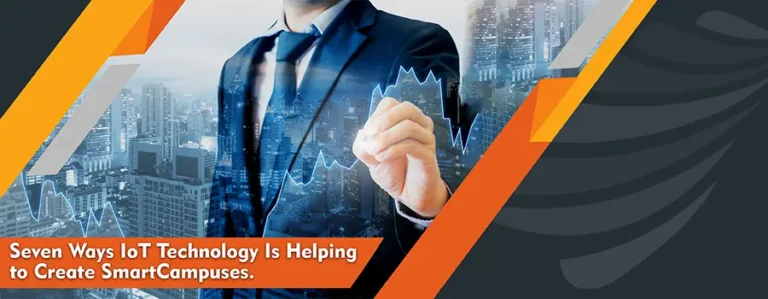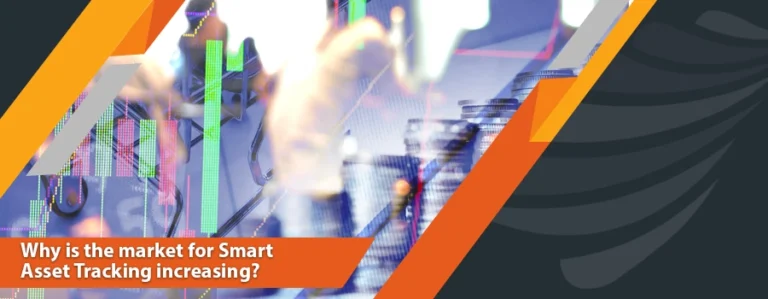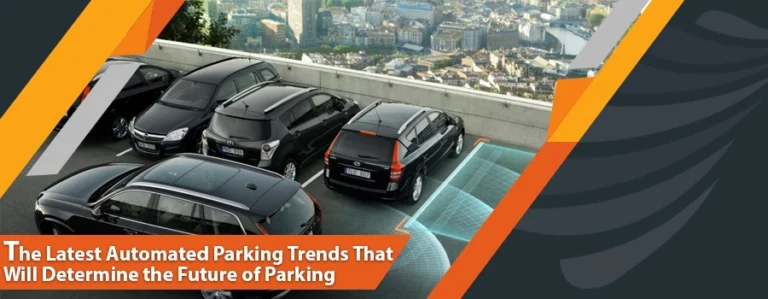The urban population of the world is increasing dramatically and as per the prediction of Our World in Data, by 2050, the number of people living in urban areas will spike up to 6.7 billion. This is twice the population as compared to the rural setting, which is expected to reach the population of 3.1 billion only. Big and small cities are becoming densely populated and in this regard, municipalities are facing a wide range of challenges that require immediate attention. Urban crimes, traffic congestions, sanitation problems and environmental deterioration are some of the common challenges of increased population in urban areas and to prevent these, municipalities turn to the adoption of smart technologies, such as the Internet of Things (IoT).
IoT holds the potential to cater to the needs of the increased urban population while making living more secure and comfortable. Referring to this, the IoT use cases for smart cities are limitless as it contributes to public safety, optimized traffic control and a healthier environment etc. which are the main essences of smart city developments. The following article sheds light on the top 8 and most popular use cases of IoT for smart cities that are worth the implementation.
1. Road Traffic
With the increased population, the traffic congestion on the roads is also increasing. However, smart cities aim to make the citizens reach the desired destination efficiently and safely. To achieve this aim, municipalities turn to smart traffic solutions which are enabled by IoT technologies.
Different types of sensors are utilized in smart traffic solutions which also extract the relevant data from the driver’s smartphones to determine the speed of the vehicles and GPS location. Concurrently, monitoring of the green traffic light timing is also enabled by the smart traffic lights which are linked to the cloud management platform. Based on the current traffic situation, the traffic lights are automatically altered and this ultimately prevents traffic congestion on the roads. Furthermore, while utilizing historical data, IoT solutions can predict the future traffic conditions in smart cities and can enable the municipalities to prevent potential congestions.
2. Smart Parking
The issue of parking in cities seems inevitable but many cities around the globe are adopting IoT enabled smart parking solutions and providing hassle-free parking experiences to the citizens. With the help of road surface sensors on parking spots and GPS data from the driver’s phone, smart parking solutions identify and mark the parking spots that are available or occupied. Alongside, IoT based smart parking solution creates real-time parking map on either mobile or web application. The sensors embedded in the ground send data to the cloud and server which notifies the driver whenever the nearest parking spot is free. Instead of blindly driving around, a smart parking solution helps the driver to find the parking spots easily.
3. Public Transport Management
Managing public transport efficiently is one of the major concerns of the big cities. However, IoT offers a use case for smart cities in this regard as well. The IoT sensor associated with public transport gathers and analyzes data which help the municipalities to identify the patterns in which the citizens are using public transport. Later on, this data-driven information is used by the traffic operators to achieve the standardized level of punctuality and security in transportation along with enhancing the travelling experience of the citizens.
4. Utility Management
IoT enabled smart city solutions give citizens complete control over home utilities and save their money as well. Different utility approaches are powered by IoT. These include smart meter and billing solutions, identification of consumption patterns and remote monitoring. Smart meters transfer data to the public utility through a telecom network, making the meter readings reliable. This solution also enables utility companies to accurately bill the amount of gas, energy and water consumed per household. A smart network of meters facilitates utility companies to monitor the consumption of resources in real-time to balance the supply and demand. This indicates that the IoT not only offers the benefit of utility control to the consumers but also helps the utility companies to manage their resources.
5. Street Lighting
Smart city development aims to improve the quality of life and make living easy, cost-effective and sustainable. Majority of the traditional street lights equipped on the roads waste power as they are always switched on even when no vehicle or a person is passing. IoT enables the cities to save power by embedding sensors in street lights and connecting them with the cloud management solution. This helps in managing the lighting schedule. Smart lighting solutions collect data movement of vehicles and people and link it to the historical data (e.g. time of day, public transport schedule and special events). Later on, the data is analyzed to improve and manage the lighting schedule in smart cities. In other words, it can be said that the smart lighting solution analyzes the outer conditions and directs the street light to switch on or switch off, brighten or dim where required.
6. Waste Management
The waste collection operators in cities use predefined schedules to empty the waste containers. This is a traditional waste collection approach that is not only inefficient but also leads to unnecessary use of fuel consumption and unproductive use of waste containers by waste collecting trucks. IoT offers waste collection optimization by tracking waste levels along with providing operational analytics and route optimization to manage the waste collection schedule efficiently.
IoT sensors are attached to the waste containers. These sensors monitor the level of waste in the containers. When the waste reaches the threshold, waste truck drivers are immediately notified through the mobile application. Hence, only the full containers are emptied by the truck drivers.
7. Environmental Well-being
Smart cities are focused on providing a healthy environment to the citizens. IoT-enabled smart city solutions help the municipalities in monitoring the environmental conditions that might be harmful to human beings. For instance, sensors can be attached to the water grid to inspect the quality of water in cities. The cloud platforms with which the sensors are in communication immediately generate triggers when the chemical composition of the water changes or leakage occurs. This smart solution help quality management organizations prevent water contamination and fix the issue as soon as possible. The IoT solutions are also applicable to measure the air quality, identify the areas where air pollution is critical and recommends solutions to improve the air quality.
8. Public Safety
Providing safety to the citizens is an ultimate goal of municipalities. In this regard, IoT-based smart city technologies provide decision-making tools, analytics and real-time monitoring for enhancing public safety. Sensors and CCTV cameras are deployed throughout the city and data from them is combined to predict the crime scenes. This allows the law enforcement bodies and police to track the perpetrators in real-time and stop them from causing potential harm to the public.
Let’s Sum It Up!
IoT with its highly diverse range of benefits and use cases helps cities to manage public services, transport and infrastructure efficiently. All of these smart solutions lead to the same outcomes of a healthier environment, safer cities, optimal use of resources and reduced cost of energy. To a greater extent, global smart city initiatives are powered by IoT technologies, which have a promising future as well.

